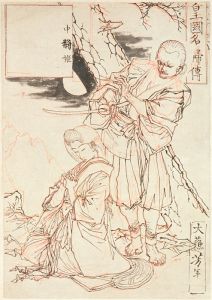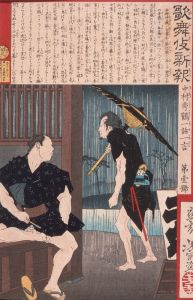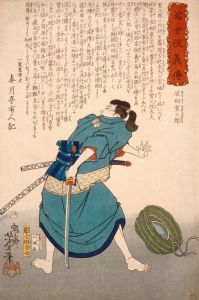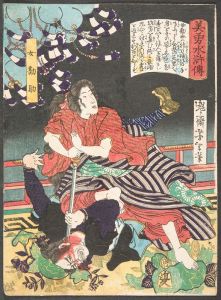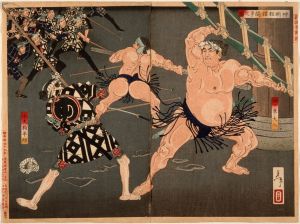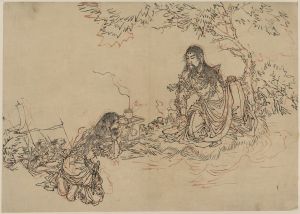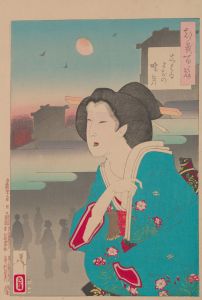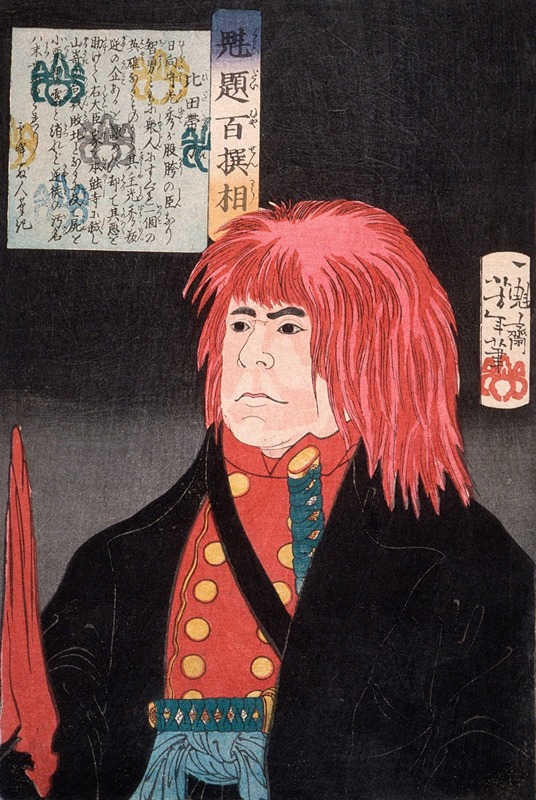
Hida no Tatewaki Wearing a Red Wig
A hand-painted replica of Tsukioka Yoshitoshi’s masterpiece Hida no Tatewaki Wearing a Red Wig, meticulously crafted by professional artists to capture the true essence of the original. Each piece is created with museum-quality canvas and rare mineral pigments, carefully painted by experienced artists with delicate brushstrokes and rich, layered colors to perfectly recreate the texture of the original artwork. Unlike machine-printed reproductions, this hand-painted version brings the painting to life, infused with the artist’s emotions and skill in every stroke. Whether for personal collection or home decoration, it instantly elevates the artistic atmosphere of any space.
Tsukioka Yoshitoshi (1839–1892) was a prominent Japanese ukiyo-e artist, known for his innovative and dramatic woodblock prints. He is often regarded as one of the last great masters of the ukiyo-e tradition, which flourished during the Edo period and into the early Meiji era. Yoshitoshi's works are celebrated for their dynamic compositions, vivid use of color, and emotional intensity, often depicting historical, mythological, and supernatural themes.
One of Yoshitoshi's notable prints is Hida no Tatewaki Wearing a Red Wig. This artwork is part of his series New Forms of Thirty-Six Ghosts (Shinkei Sanjūrokkaisen), which was published between 1889 and 1892. The series explores ghostly and supernatural themes, drawing inspiration from Japanese folklore, kabuki theater, and historical tales. Each print in the series features a striking depiction of a character or scene associated with the supernatural, often accompanied by a brief explanatory text.
In Hida no Tatewaki Wearing a Red Wig, Yoshitoshi portrays Hida no Tatewaki, a historical figure whose story is intertwined with Japanese legends and kabuki performances. The print shows Tatewaki wearing a distinctive red wig, a visual element that is both dramatic and symbolic. Red wigs in kabuki often signify a character with fiery passion, strength, or supernatural qualities. Yoshitoshi's use of bold colors and intricate details captures the theatricality and intensity of the subject, reflecting his mastery of the woodblock printing technique.
The exact historical context of Hida no Tatewaki's story is not entirely clear, as it may be a blend of historical fact and artistic interpretation. However, Yoshitoshi's depiction emphasizes the character's striking appearance and enigmatic presence, aligning with the themes of the New Forms of Thirty-Six Ghosts series. The print exemplifies Yoshitoshi's ability to merge traditional Japanese aesthetics with a modern sensibility, creating works that resonate with both contemporary and historical audiences.
Yoshitoshi's New Forms of Thirty-Six Ghosts series was produced during the late Meiji period, a time of significant cultural and social change in Japan. As Western influences began to permeate Japanese art and society, Yoshitoshi remained committed to preserving and revitalizing the ukiyo-e tradition. His works, including Hida no Tatewaki Wearing a Red Wig, reflect a deep appreciation for Japan's cultural heritage while also showcasing his innovative approach to storytelling and visual expression.
Today, Tsukioka Yoshitoshi's prints are highly regarded by art historians and collectors, and they continue to be studied for their artistic and cultural significance. Hida no Tatewaki Wearing a Red Wig stands as a testament to Yoshitoshi's skill and creativity, offering a glimpse into the rich world of Japanese folklore and the enduring legacy of ukiyo-e art.






